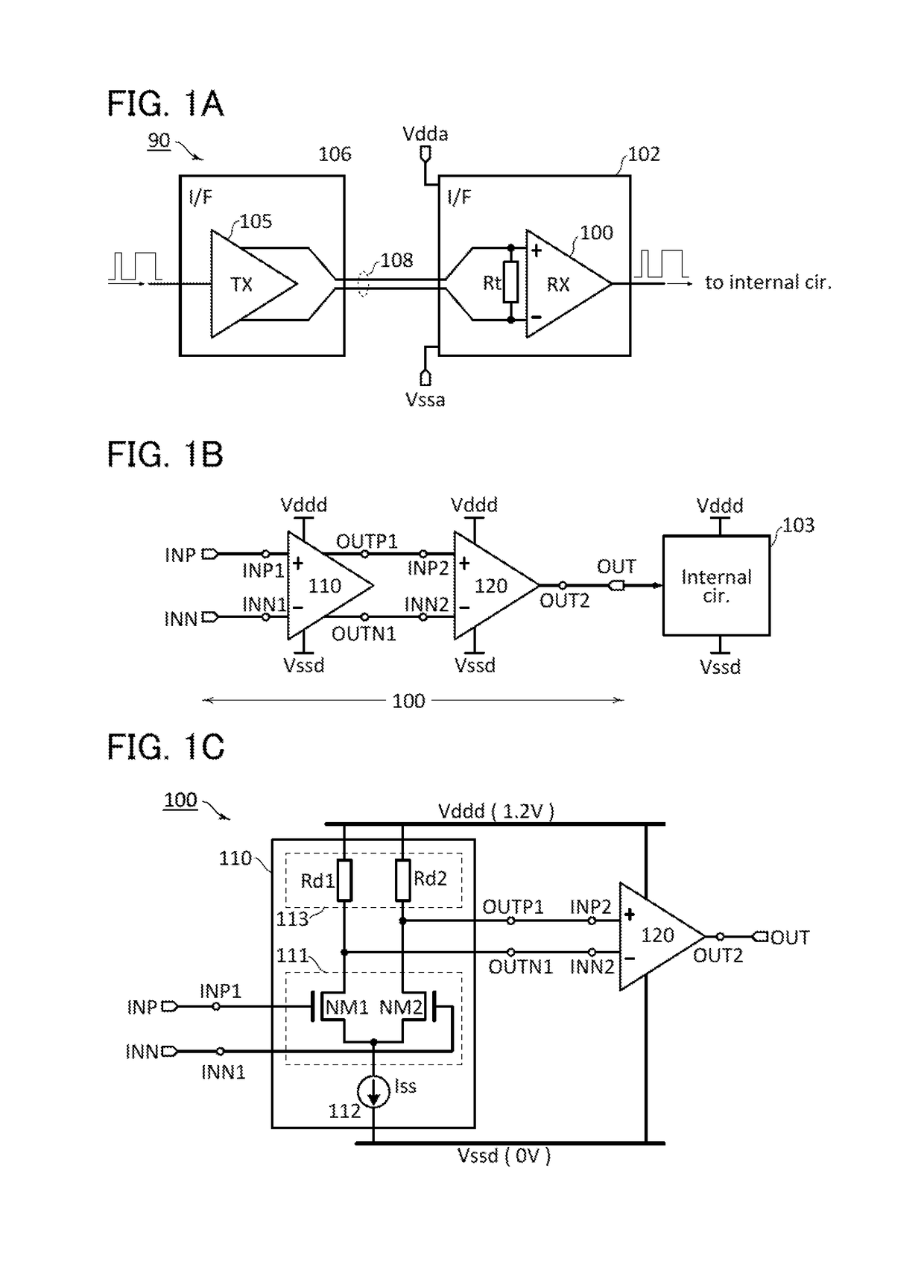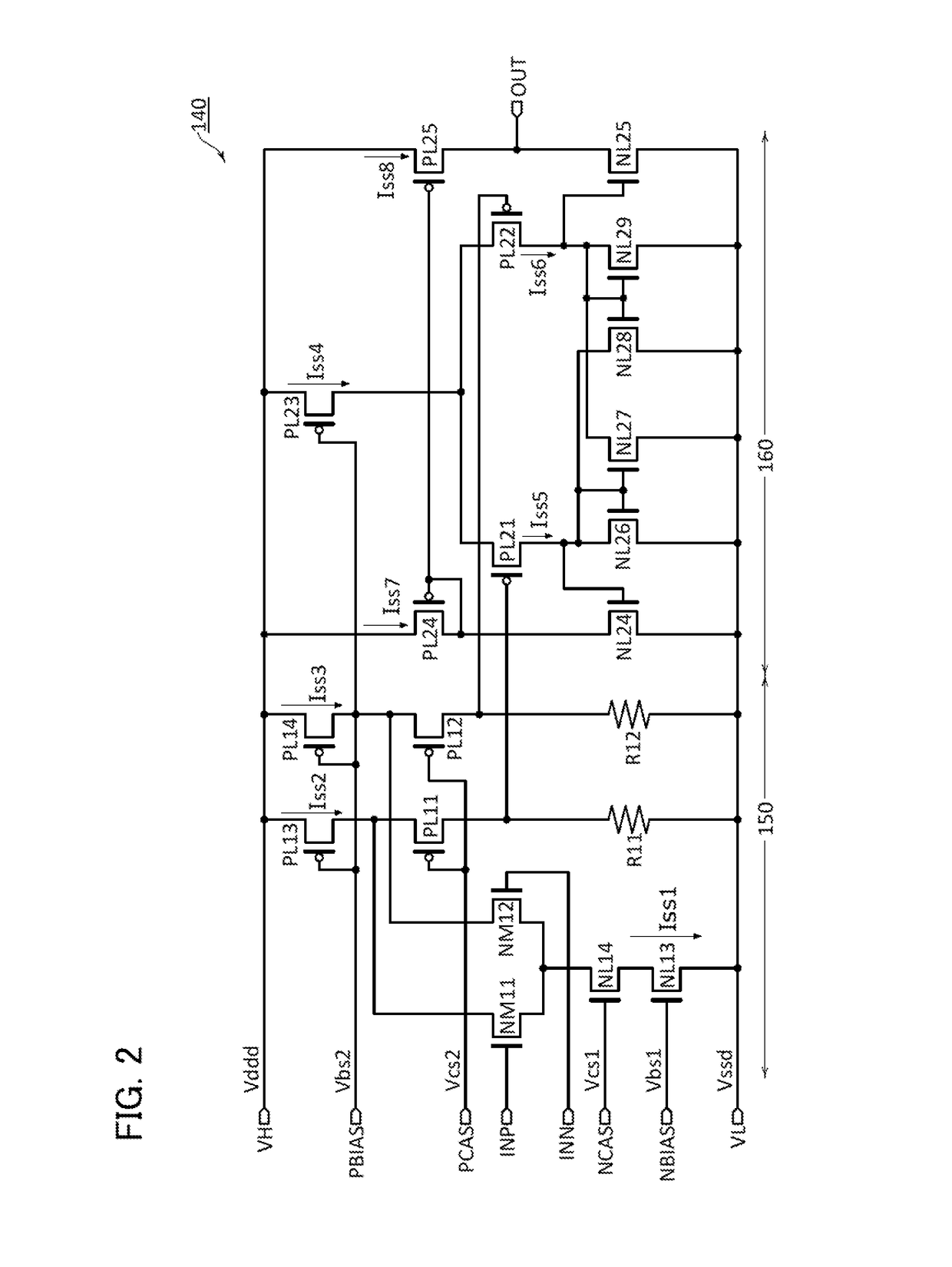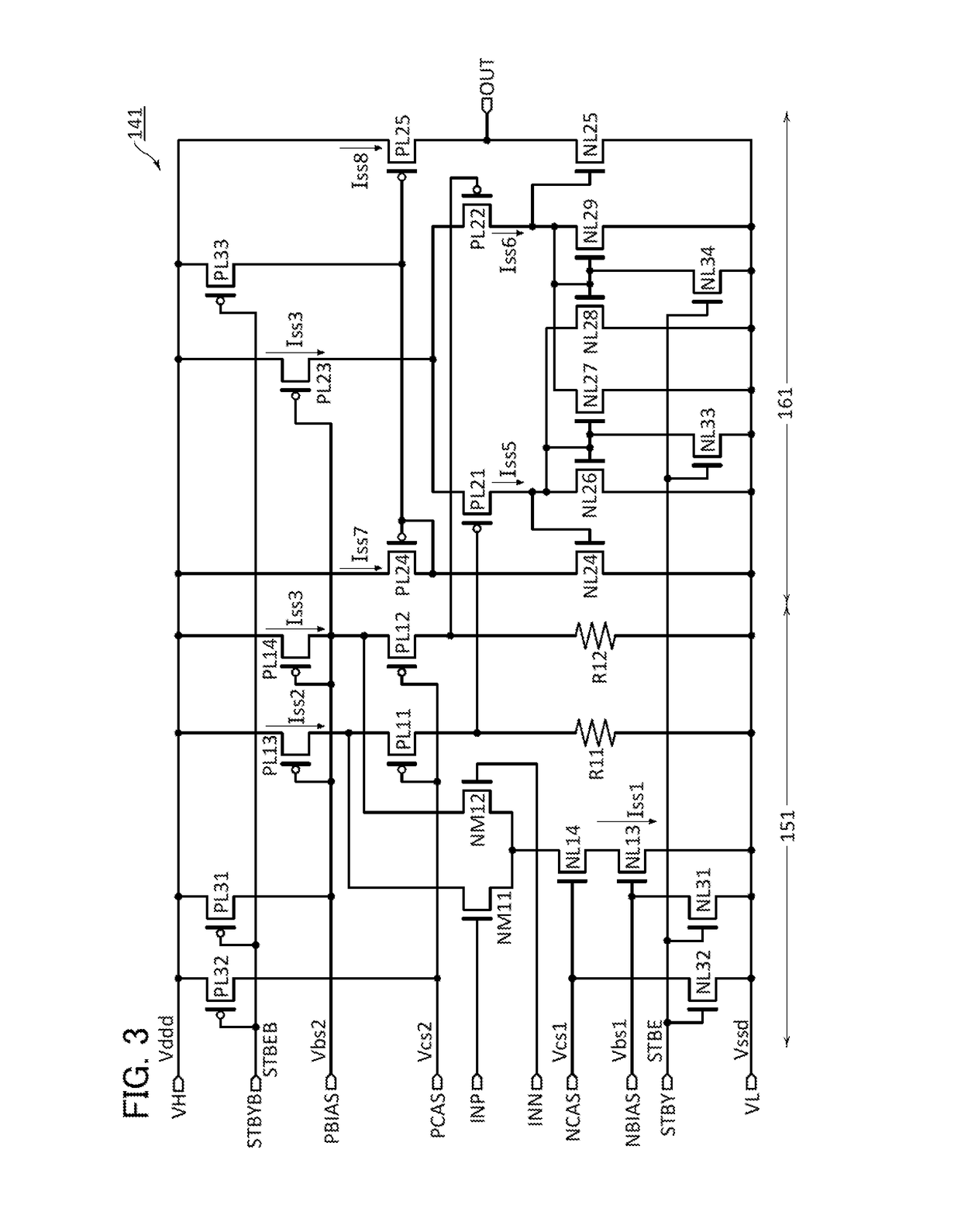Receiver for receiving differential signal, IC including receiver, and display device
a technology for receiving differential signals and display devices, which is applied in static indicating devices, single-ended push-pull amplifiers, instruments, etc., can solve the problems of reducing display quality, increasing the number of wirings, and increasing power consumption, and achieve high input/output linearity
- Summary
- Abstract
- Description
- Claims
- Application Information
AI Technical Summary
Benefits of technology
Problems solved by technology
Method used
Image
Examples
embodiment 1
[0066]FIG. 1A illustrates an overview of a system for transmitting a digital signal using a differential signal (a differential transmission system). An example in which LVDS is a differential transmission method is described here. In a differential transmission system 90 illustrated in FIG. 1A, an interface (I / F) circuit 102 at the receiving end includes a receiver (RX) 100, and an interface circuit 106 at the transmitting end includes a transmitter (TX) 105. The transmitter 105 converts a single-ended signal into a differential signal. The differential signal is transmitted to the receiver 100 via a transmission medium 108.
[0067]The transmitter 105 has a function of converting a single-ended digital signal into a differential signal. The differential signal that is output from the transmitter 105 is input to the receiver 100 via the transmission medium 108. The transmission medium 108 includes two wirings. A resistor Rt is a termination resistor at the receiving end and has a resi...
configuration example 1
[0126]FIG. 8 illustrates a configuration example of an LVDS receiver IC with four input channels. An LVDS receiver IC 200 includes receivers 2101> to 2104>, a bias voltage generation circuit 212, a reference current generation circuit 213, a logic circuit 215, and pins RINP1 to RINP4, RINN1 to RINN4, ROT1 to ROT4, VH1, VL1, and CE.
[0127]The pins RINP1 to RINP4 and RINN1 to RINN4 are input pins for differential signals. In the LVDS receiver IC 200, a resistor for terminating the pin RINP1 and the pin RINN1 is provided. The other input pins for differential signals are also terminated similarly.
[0128]The pins ROT1 to ROT4 are output pins for single-ended signals. The pins VH1 and VL1 are input pins for power supply voltages; for example, the power supply voltage Vddd is input to the pin VH1 and a ground voltage (GND) is input to the pin VL1. The pin CE is an input pin for a chip enable signal.
[0129]The logic circuit 215 generates the signals STBE and STBEB based on the chip enable sig...
configuration example 2
[0131]FIG. 9 illustrates a configuration example of an LVDS receiver IC. An LVDS receiver IC 201 has four input channels and has a function of outputting a 32 (4×8) bit parallel data signal. The LVDS receiver IC 201 has a function of a deserializer. The LVDS receiver IC 201 includes receivers 2101> to 2105>, serial-parallel (S / P) converter circuits 2201> to 2204>, a phase locked loop (PLL) circuit 221, a bias voltage generation circuit 212, a reference current generation circuit 213, a logic circuit 215, and pins RINP1 to RINP4, RINN1 to RINN4, CKINP, CKINN, ROT1_1 to ROT1_8, ROT2_1 to ROT2_8, ROT3_1 to ROT3_8, ROT4_1 to ROT4_8, RCKO, VH1, VL1, and CE.
[0132]The LVDS receiver IC 201 includes four data lanes and one clock lane. Differential clock signals RCLK_P and RCLK_N are input to the clock lane from the pins CKINP and CKINN. The receiver 2105> converts the differential clock signals RCLK_P and RCLK_N into a single-ended clock signal. The PLL circuit 221 generates a clock signal C...
PUM
 Login to View More
Login to View More Abstract
Description
Claims
Application Information
 Login to View More
Login to View More - R&D
- Intellectual Property
- Life Sciences
- Materials
- Tech Scout
- Unparalleled Data Quality
- Higher Quality Content
- 60% Fewer Hallucinations
Browse by: Latest US Patents, China's latest patents, Technical Efficacy Thesaurus, Application Domain, Technology Topic, Popular Technical Reports.
© 2025 PatSnap. All rights reserved.Legal|Privacy policy|Modern Slavery Act Transparency Statement|Sitemap|About US| Contact US: help@patsnap.com



